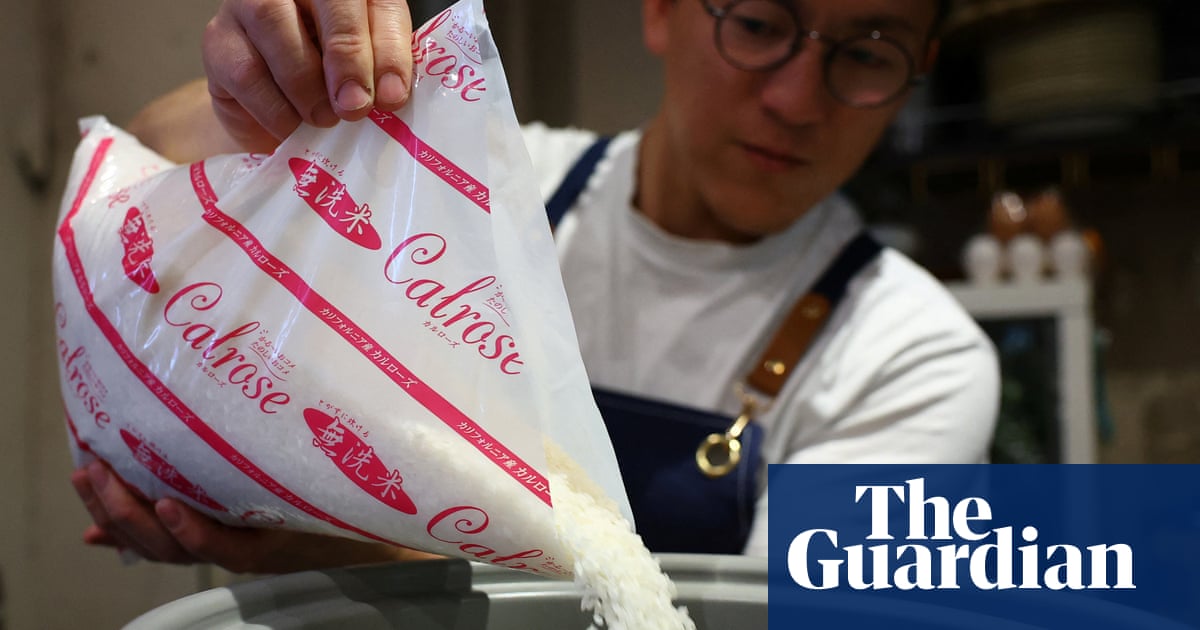Japanhas imported rice from South Korea for the first time in a quarter of a century in an attempt to address soaring prices and growing consumer anger.
South Koreanricearrived in Japan last month for the first time since 1999, according to media reports, as the price of domestically produced grain continued to rise, despite government attempts to relieve the pressure on shoppers.
The price of Japan-grown rice has more than doubled since this time last year, fuelling demand for cheaper foreign grain, despite the heavy tariffs imposed on imports.
The quantity of South Korean rice, which was sold online and at supermarkets, is still relatively low at just two tonnes, but there are plans to ship a further 20 tonnes in the coming days, the public broadcaster NHK said.
While Japanese consumers have traditionally been sceptical about thequality and taste of foreign rice– Thai rice imported after an unusually cool summer in 1993 largely went unsold – the current crisis has forced Japanese consumers to develop a taste for foreign rice.
South Korea’s rice exports to Japan are expected to reach their highest since 1990, according to the Yonhap news agency, while the crisis has also opened up potential export opportunities for producers in the US.
Arata Hirano, who runs a restaurant in Tokyo, switched from Japanese to American rice last year when a shortage of the domestic grain triggered a steep rise in prices.
Hirano told Reuters that the price of the Californian product he now served had doubled since his first purchase last summer, but was still cheaper than homegrown rice.
And he has had no complaints from diners, including Miki Nihei, who was surprised to find out the rice she had eaten wasn’t grown in Japan. “I had no idea,” she said. “I have no qualms about eating imported rice. Prices have gone up, so I’m always looking for cheaper options.”
In the week to 6 April, Japanese supermarket rice prices reached an average of ¥4,214 ($30/£22) for 5kg – more than double the same period a year earlier.
The trend has forced the Japanese government to take the unusual step of dipping into its vast rice reserves. In March itbegan releasing 210,000 tonnes of stockpiled ricein an attempt to arrest price rises caused by a combination ofrecord summer heat, panic buying and distribution problems.
Japan had previously dipped into its rice reserves in the aftermath of natural disasters or crop failures, but this was the first time it had intervened over distribution issues.
The measure has had little impact, however.
Last week the agriculture ministry said “logistical problems” meant only a tiny quantity of the released rice had reached shops.
About 142,000 tonnes of stockpiled rice were released in the first auction held in mid-March, but as of the end of the month just 426 tonnes, or 0.3% of the total, had reached supermarkets and other outlets, the ministry said, blaming the bottleneck on a shortage of delivery vehicles and the time needed to prepare the grain for sale.
Japan’s rice stockpiles had already depleted after record-breaking temperatures affected the 2023 crop. Stockpiles shrank again last year, partly due to a rise in consumption caused by record numbers of tourists. Supplies were also hit bypanic buyingin the wake of typhoon and earthquake warnings, forcing some retailers to restrict sales.
